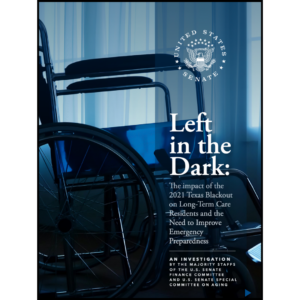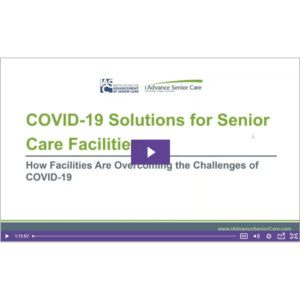Powering up for power outages
In 2003, the northeastern United States experienced a widespread blackout that left approximately 45 million people across eight states without power. As a result, some communication and transportation systems were disrupted, some areas experienced loss of water pressure, and most businesses were unable to operate until power was restored. Unfortunately, many long-term care communities in the affected areas discovered their unpreparedness the hard way.
Many healthcare providers found that the emergency preparedness plan that they had put so much faith in did not address all of the problems they actually encountered, so they had to “wing it.” As a result of their experiences, the industry has learned many lessons.
Even a brief power outage can potentially impact multiple systems, including:
- HVAC
- Life-support systems (ventilators)
- Water distribution
- Communications
- Fire pump and life safety systems
- Critical lighting systems
- Clinical IT systems
- Electronic health records
- Electronic document exchange/file transfers to and from the facility (discharge summaries, care plans, etc)
- Pharmacy order access and CPOE (electronic medication orders)
One of the critical lessons learned from the 2003 blackout was that power outages do not just occur on dayshift when everyone is at work and all of the “experts” are readily available. They happen on all shifts, and usually at the worst possible times. Therefore, preplanning is a critical part of being ready for an outage.
One of the most important things is to make certain that your preparedness plan includes critical contact information for the electric utility company. Knowing where your facility is located on the power distribution network may be of value as well. Meeting with the electric utility company in advance may be a valuable step—emphasize the effects a power outage has on your operations and on the care of your residents. Many times, long-term care facilities are not thought about, while hospitals and urgent care facilities receive all the attention.
Power outages are another strong argument for allowing all employees to carry cell phones. During a power outage, the facility’s phone system will likely be inoperable; however, cell service may continue to operate normally. Having cellular communications capabilities will keep staff in contact with the outside world and may be a valuable tool in summoning any emergency assistance as needed.
Pre-determining critical systems and functions is another key step. In the event that portable generators are needed in an extended outage (or if the facility does not have its own backup generator) is critical to know how the portable power will be prioritied. Which systems need them the most? Can generator use be rotated among systems? Portable gasoline-powered generators are valuable tools, but they have their limitations. Plan their use judiciously.
Food safety is another critical concern. If the power is out for less than four hours, then the food in the refrigerator and freezer should remain safe to consume. While the power is out, keep refrigerator and freezer doors closed as much as possible to keep food cold for longer.
If the power is out for more than four hours:
- For the freezer section: A freezer that is at half-full will hold food safely for up to 24 hours. A full freezer will hold food safely for 48 hours. Do not open the freezer door if you can avoid it.
- For the refrigerated section: Pack milk and other dairy products, meat, fish, eggs, gravy and perishable leftovers into a cooler surrounded by ice. Inexpensive Styrofoam coolers are fine for this purpose.
- Use a food thermometer to check the temperature of the food once you take it out of the refrigerator. Throw away any food that has a temperature of more than 40 degrees Fahrenheit.
Temperatures within the buildings are another critical concern. With the loss of power, temperatures may rise quickly in the summer and plummet quickly in the winter. In severe cases, emergency evacuations may be necessary. The facility’s preparedness plan should include the parameters that define a temperature-related evacuation decision.
The ramifications of a power outage are far-reaching. Preparedness plans are usually written with the mindset that the outage will be short. However, the longer an outage lasts the more complications and risks will compound; so a worst-case scenario must be planned for as well. The well-prepared facility is one that has developed a comprehensive plan, provides ongoing training to its employees and regularly exercises its plan to make sure the plan works properly and that all employees understand their roles.
Stay safe and stay in touch!

Steve Wilder, CHSP, STS, is president and chief operating officer of Sorensen, Wilder & Associates (SWA), a healthcare safety and security consulting group based in Bourbonnais, Ill. SWA performs workplace safety compliance audits and security vulnerability assessments in all types of healthcare facilities. Wilder can be reached at (800) 568-2931 or swilder@swa4safety.com.
Related Articles
Topics: Disaster Preparedness , Executive Leadership , Risk Management











